Tlf: +34 915 222 383
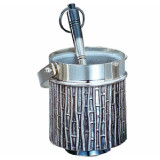 Acetres e Hisopos
Acetres e Hisopos
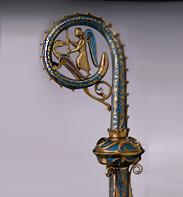 Anillos, báculos y cruces pectorales para obispo (Artículos Episcopales)
Anillos, báculos y cruces pectorales para obispo (Artículos Episcopales)
 Articulos Procesionales
Articulos Procesionales
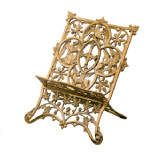 Atriles
Atriles
 Benditeras
Benditeras
 Cajas de Formas (Portaviáticos) y de Llaves
Cajas de Formas (Portaviáticos) y de Llaves
 Cálices, Copones y Copones-Patena. Vasos Sagrados
Cálices, Copones y Copones-Patena. Vasos Sagrados
 Candeleros
Candeleros
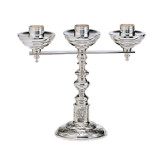 Candeleros de altar
Candeleros de altar
 Coronas, Aureolas, Potencias
Coronas, Aureolas, Potencias
 Crismeras
Crismeras
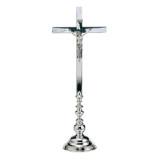 Cruces Parroquiales y de Altar
Cruces Parroquiales y de Altar
 Custodias y Ostensorios
Custodias y Ostensorios
 Incensarios
Incensarios
 Lámparas y Lámparas del Santísimo
Lámparas y Lámparas del Santísimo
 Lavabos
Lavabos
 Maletines Misa / Estuches Celebración
Maletines Misa / Estuches Celebración
 Ofertas
Ofertas
 Patenas, Bandejas de comunión y Platos de pan
Patenas, Bandejas de comunión y Platos de pan
 Regalos especiales y varios
Regalos especiales y varios
 Relicarios
Relicarios
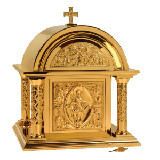 Sagrarios
Sagrarios
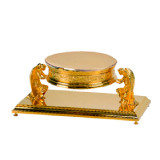 Tabores y Manifestadores
Tabores y Manifestadores
 Tapas de Evangeliario y Biblia
Tapas de Evangeliario y Biblia
 Trabajos Especiales
Trabajos Especiales
 Via Crucis
Via Crucis
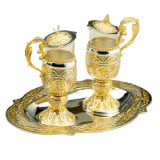 Vinajeras
Vinajeras
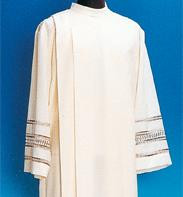 Albas y Cíngulos
Albas y Cíngulos
 Año Jubileo 2.025
Año Jubileo 2.025
 Aplicaciones, flecos y borlas
Aplicaciones, flecos y borlas
 Camisas
Camisas
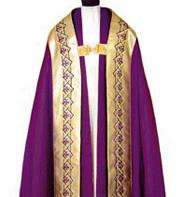 Capas Pluviales y Dalmáticas/Capas pluviales y dalmáticas a medida
Capas Pluviales y Dalmáticas/Capas pluviales y dalmáticas a medida
 Casullas/ Casullas a medida
Casullas/ Casullas a medida
 Estandartes y Balconeras
Estandartes y Balconeras
 Estolas y Estolones
Estolas y Estolones
 Fajines y bonetes
Fajines y bonetes
 Galones y puntillas
Galones y puntillas
 Juegos de Altar, Corporales, Palias y Purificadores
Juegos de Altar, Corporales, Palias y Purificadores
 Manteles/Frentes de Altar
Manteles/Frentes de Altar
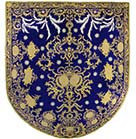 Mantos
Mantos
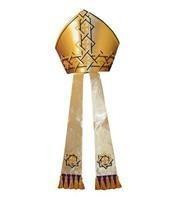 Mitras
Mitras
 Ofertas
Ofertas
 Palios
Palios
 Paños de Atril y Ambón/Paños de Atril y Ambón a medida
Paños de Atril y Ambón/Paños de Atril y Ambón a medida
 Paños de Hombros/Paño de Hombros a medida
Paños de Hombros/Paño de Hombros a medida
 Perchas
Perchas
 Roquetes
Roquetes
 Sotanas
Sotanas
 Telas
Telas
 Vestidos para Imágenes
Vestidos para Imágenes
Desde hace décadas, Santarrufina, dentro de su dedicación de servicio a la Iglesia, viene realizando trabajos de restauración especializada, cubriendo todas las necesidades de nuestros clientes de una manera respetuosa con los criterios de intervención actuales, buscando siempre la recuperación del bien a tratar, manteniendo los mismos procesos de ejecución, sistemas, materiales, etc. que fueron utilizados en su origen.
Cálices, Custodias, Sagrarios, etc. La Orfebrería es restaurada recuperando las piezas que son salvables y realizando la sustitución de aquellas partes destruídas por otras nuevas, pero ejecutadas de la misma forma en que se hicieron en su época (cincelado a mano, grabado a buril, esmaltado a fuego, etc.). Cuidamos no utilizar soldaduras que no sean de aportación de plata u oro, dependiendo de los casos, manteniendo el pulido manual, con el fin de garantizar su perfección y realizando unos procesos electroquímicos en sus terminaciones finales que garanticen un recubrimiento ya sea de oro puro 24 K. o plata pura de 1.000 milésimas con un espesor de máxima calidad.
En madera, mármol, bronce, pasta de madera, fibra de vidrio o resina. Las intervenciones más habituales son el desinsectado, limpieza y consolidado de todas las partes que forman el soporte de la obra, haciendo nuevas aquellas piezas que falten para conseguir su reintegración volumétrica. La policromía, una vez limpia y fijada correctamente, será reintegrada cromáticamente mediante estucos, embolados, dorados en oro fino, policromados y estofados. Finalmente se aplicará una capa de resina natural con el fin, no solo de proteger la obra, sino conseguir una vivacidad de color y una homogeneidad de textura y brillo muy próximas a las del original.
Tras un estudio inicial sobre el estado de la obra, en el que se analiza su asentamiento, estado del lienzo, suciedad, faltas pictóricas, etc., se procede a realizar diversas catas con las que se determina el método a seguir más apropiado para recuperar la obra a su estado original.
Tras un análisis previo de las mismas, una vez preparadas y numeradas, siguiendo el protocolo del Corpus Vitrearum, se trasladan al taller. Tras distintas intervenciones de limpieza con agua destilada, usando papetas, cuchillas, bisturí..., se estudian detalladamente sobre una mesa de luz con el fin de descubrir los vidrios rotos, ausencias e intervenciones realizadas anteriormente. Los vidrios rotos son sellados mediante el uso de adhesivos específicos. Las fracturas de plomo son saneadas, procediéndose a su soldadura y enmasillado, recuperándose así su estado original. Las ausencias de grisallas podrán ser tratadas superponiendo en la trasera un cristal transparente o realizando una nueva grisalla debidamente documentada para su identificación y posible reversibilidad, quedando la grisalla original conservada fuera del conjunto de la vidriera.
Presentamos una muestra de los trabajos de restauración de las vidrieras de la Parroquia de la Santa Cruz, en Madrid.
Retablos, bancos, mesas de Altar, etc. Como ejemplo de recuperación y restauración de mobiliario vamos a tomar este Retablo del S. XVI, en el que, tras un exhaustivo estudio y con el fin de devolver la obra, dentro de un criterio devocional, a su estado original, se realizan los siguientes trabajos: limpieza en seco, desinsectación, consolidación tanto del soporte como de la capa pictórica, limpieza final mediante uso de disolventes adecuados, reintegración volumétrica y escultórica, reintegración cromática y barnizado de protección. La magnífica obra pictórica que compone este Retablo fue tratada según explicamos en la restauración de Pintura descrita anteriormente. Dentro de este proceso de restauración se consolida la estructura o soporte del mismo, con el fin de asegurar tras su montaje una perfecta estabilidad de la obra.
Los órganos, tanto o más que cualquier otra obra de arte, deben procurar en su restauración recuperar todo su esplendor original. Por tanto, partiendo del conocimiento profundo del órgano a restaurar, del organero que lo construyó, de las características de la época en que fue realizado, etc, ha de ser recuperado fielmente hasta su estado de origen, salvando todas las piezas que aún conserve y realizando nuevas aquellas que han desaparecido, utilizando los mismos materiales, sistemas y métodos que fueron aplicados en su día para su fabricación. Dentro de las intervenciones generales realizadas en la restauración de un órgano mecánico de tubos, podemos detallar las siguientes actuaciones:
Casullas, Capas, ropa de Altar, etc. Los tejidos y los bordados, dependiendo de los casos, son recuperados mediante pasados, limpiezas o reentelados, si bien, siempre que se desee seguir utilizando la pieza a restaurar, es aconsejable realizar el pasado de los elementos decorativos (bordados o aplicaciones) a un nuevo tejido. Solamente para aquellos casos en que su uso fuese la exposición en un museo, vitrina, etc., sería aplicable su tratamiento de limpieza o reentelado, con el fin de lograr su consolidación. Todas aquellas faltas de bordados serán recuperadas mediante la ejecución de nuevos bordados a mano, manteniéndose los mismos estilos y calidades de trabajo, así como los materiales (hilos, hojillas, canutillos, cordoncillos, etc.), de tal forma que, siendo reversibles y claramente identificados e identificables como aportación al trabajo original, sin embargo, mantengan la calidad y belleza de origen.